Liver transplantation consideration and evaluation: a life-saving treatment in acute-on-chronic liver failure
With the rising prevalence of chronic liver disease worldwide, the incidence and prevalence of acute-on-chronic liver failure (ACLF) are increasing and attribute to higher morbidity, mortality, and
[...] Read more.
With the rising prevalence of chronic liver disease worldwide, the incidence and prevalence of acute-on-chronic liver failure (ACLF) are increasing and attribute to higher morbidity, mortality, and healthcare costs. Many of such patients die without being considered for the lifesaving treatment option of liver transplantation. The underutilization of liver transplantation as a therapeutic option in the setting of ACLF, is due to multiple reasons; with the heterogeneity of ACLF and the lack of universal definition being the key players. Liver transplantation listing and allocation are based on MELD score. As of now, we do not know where MELD score stands in regard to defining ACLF and the prognostication of such patients. This insight is very important for the efficient identification of potential liver transplantation candidates in the setting of ACLF. This review paper investigates the role of liver transplantation in the setting of ACLF. In light of recent evidence, MELD score is not the perfect model in the setting of ACLF either. The safety of liver transplantation, either deceased donor or living donor, among ACLF patients has been debated. The short-term mortality rate of ACLF patients has created a need for a standard liver transplant selection criterion for these patients. Based on published literature, we find that three commonly used ACLF definitions may be used in combination to define the sensitivity, specificity, and futility of ACLF and we propose an algorithm to best identify patients for urgent liver transplantation in the setting of ACLF. Moreover, we discuss the data on the safety of liver transplantation in the setting of ACLF. Future validation of this multifaceted approach could bridge the gap between ACLF patients and appropriately guided medical intervention.
Andrew Johnson, Shahid Habib
View:823
Download:8
Times Cited: 0
With the rising prevalence of chronic liver disease worldwide, the incidence and prevalence of acute-on-chronic liver failure (ACLF) are increasing and attribute to higher morbidity, mortality, and healthcare costs. Many of such patients die without being considered for the lifesaving treatment option of liver transplantation. The underutilization of liver transplantation as a therapeutic option in the setting of ACLF, is due to multiple reasons; with the heterogeneity of ACLF and the lack of universal definition being the key players. Liver transplantation listing and allocation are based on MELD score. As of now, we do not know where MELD score stands in regard to defining ACLF and the prognostication of such patients. This insight is very important for the efficient identification of potential liver transplantation candidates in the setting of ACLF. This review paper investigates the role of liver transplantation in the setting of ACLF. In light of recent evidence, MELD score is not the perfect model in the setting of ACLF either. The safety of liver transplantation, either deceased donor or living donor, among ACLF patients has been debated. The short-term mortality rate of ACLF patients has created a need for a standard liver transplant selection criterion for these patients. Based on published literature, we find that three commonly used ACLF definitions may be used in combination to define the sensitivity, specificity, and futility of ACLF and we propose an algorithm to best identify patients for urgent liver transplantation in the setting of ACLF. Moreover, we discuss the data on the safety of liver transplantation in the setting of ACLF. Future validation of this multifaceted approach could bridge the gap between ACLF patients and appropriately guided medical intervention.
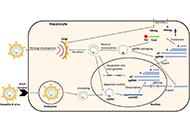 The impact of hepatitis B virus (HBV) splicing on HBV replication and disease progressionOpen AccessReviewChronic hepatitis B (CHB) disease caused by persistent infection with hepatitis B virus (HBV) is a global health problem affecting almost 300 million people worldwide, resulting in up to 1 million d [...] Read more.Laura C. McCoullough ... Peter A. RevillPublished: August 07, 2024 Explor Dig Dis. 2024;3:326–343
The impact of hepatitis B virus (HBV) splicing on HBV replication and disease progressionOpen AccessReviewChronic hepatitis B (CHB) disease caused by persistent infection with hepatitis B virus (HBV) is a global health problem affecting almost 300 million people worldwide, resulting in up to 1 million d [...] Read more.Laura C. McCoullough ... Peter A. RevillPublished: August 07, 2024 Explor Dig Dis. 2024;3:326–343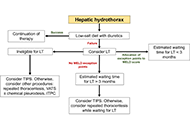 Pulmonary complications of advanced chronic liver diseases: an updated reviewOpen AccessReviewPatients with advanced chronic liver disease can develop specific pulmonary complications related or unrelated to pre-existing lung disease. The three major pulmonary complications in this patient p [...] Read more.Thierry Thevenot ... Hilary M. DuBrockPublished: July 24, 2024 Explor Dig Dis. 2024;3:301–325
Pulmonary complications of advanced chronic liver diseases: an updated reviewOpen AccessReviewPatients with advanced chronic liver disease can develop specific pulmonary complications related or unrelated to pre-existing lung disease. The three major pulmonary complications in this patient p [...] Read more.Thierry Thevenot ... Hilary M. DuBrockPublished: July 24, 2024 Explor Dig Dis. 2024;3:301–325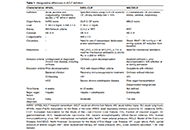 Acute decompensation and acute-on-chronic liver failureOpen AccessReviewAcute decompensation is defined as the development of ascites, bleeding due to portal hypertension, jaundice, or hepatic encephalopathy in the presence of known or unknown chronic liver disease. Acu [...] Read more.Sencan AcarPublished: July 24, 2024 Explor Dig Dis. 2024;3:275–300
Acute decompensation and acute-on-chronic liver failureOpen AccessReviewAcute decompensation is defined as the development of ascites, bleeding due to portal hypertension, jaundice, or hepatic encephalopathy in the presence of known or unknown chronic liver disease. Acu [...] Read more.Sencan AcarPublished: July 24, 2024 Explor Dig Dis. 2024;3:275–300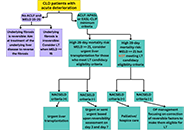 Liver transplantation consideration and evaluation: a life-saving treatment in acute-on-chronic liver failureOpen AccessReviewWith the rising prevalence of chronic liver disease worldwide, the incidence and prevalence of acute-on-chronic liver failure (ACLF) are increasing and attribute to higher morbidity, mortality, and [...] Read more.Andrew Johnson, Shahid HabibPublished: July 23, 2024 Explor Dig Dis. 2024;3:262–274
Liver transplantation consideration and evaluation: a life-saving treatment in acute-on-chronic liver failureOpen AccessReviewWith the rising prevalence of chronic liver disease worldwide, the incidence and prevalence of acute-on-chronic liver failure (ACLF) are increasing and attribute to higher morbidity, mortality, and [...] Read more.Andrew Johnson, Shahid HabibPublished: July 23, 2024 Explor Dig Dis. 2024;3:262–274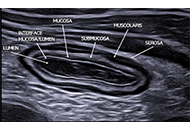 Transabdominal Gastro-Intestinal UltraSound (GIUS): a visual approach to intestinal pathologyOpen AccessPerspectiveTransabdominal ultrasound is a valuable diagnostic approach for evaluating the gastrointestinal tract and related disorders. This dynamic examination provides real-time visualization of the digestiv [...] Read more.Cristina Felicani ... Pietro AndreonePublished: July 05, 2024 Explor Dig Dis. 2024;3:241–261
Transabdominal Gastro-Intestinal UltraSound (GIUS): a visual approach to intestinal pathologyOpen AccessPerspectiveTransabdominal ultrasound is a valuable diagnostic approach for evaluating the gastrointestinal tract and related disorders. This dynamic examination provides real-time visualization of the digestiv [...] Read more.Cristina Felicani ... Pietro AndreonePublished: July 05, 2024 Explor Dig Dis. 2024;3:241–261